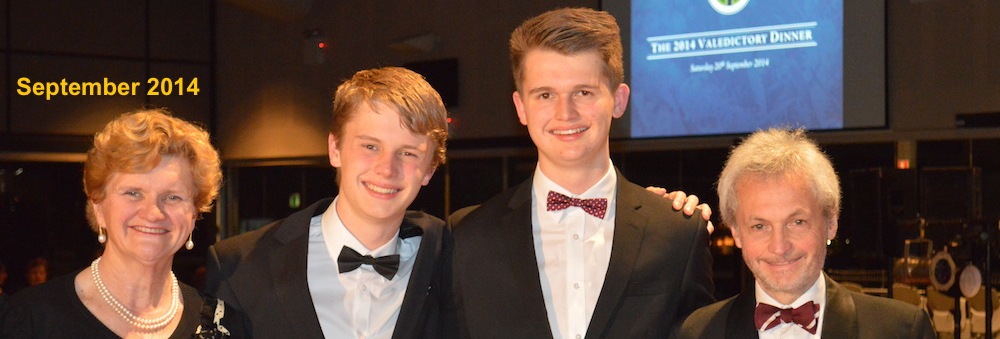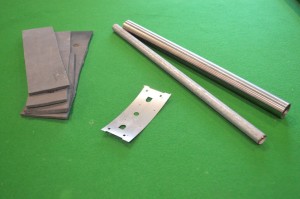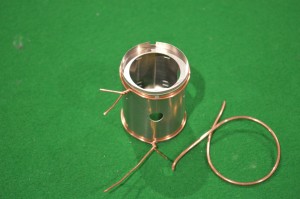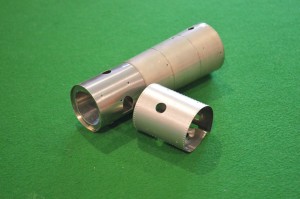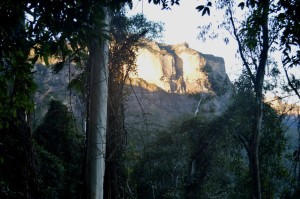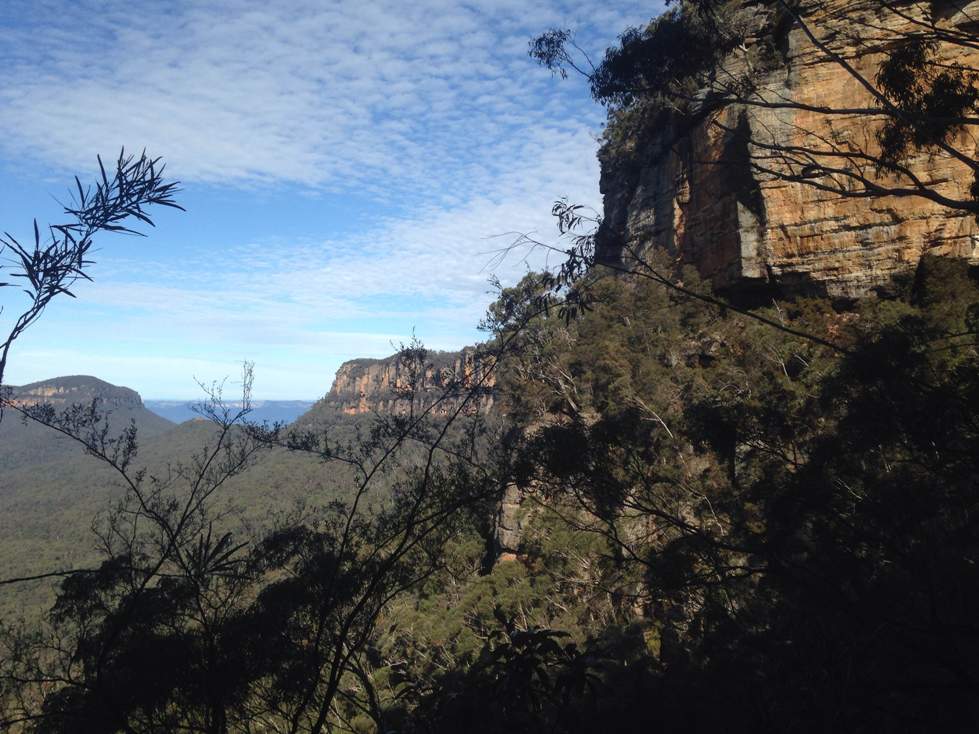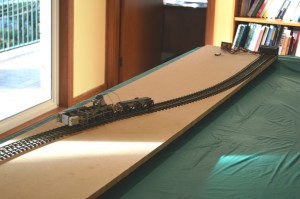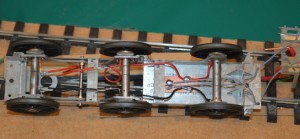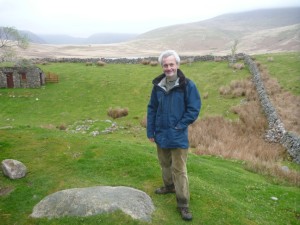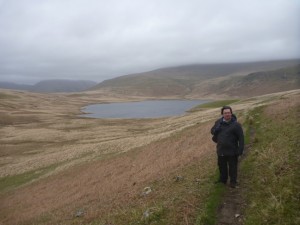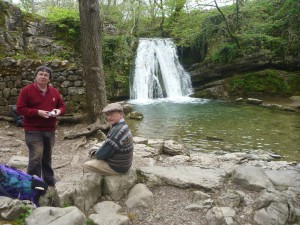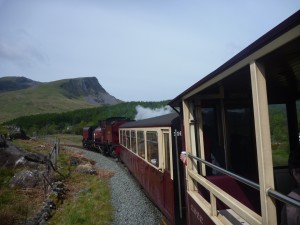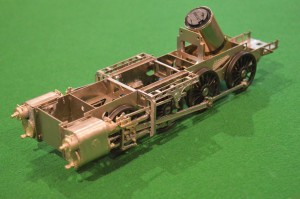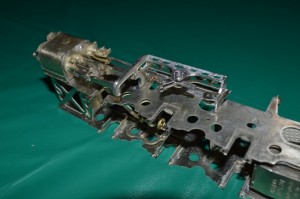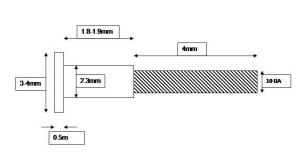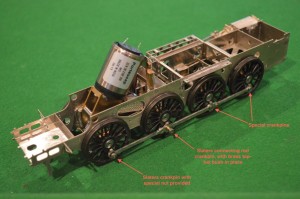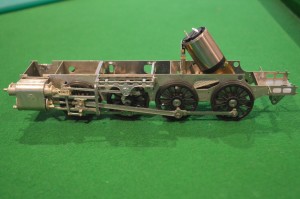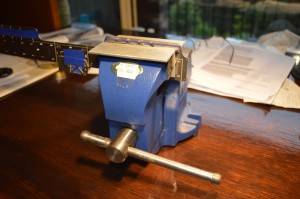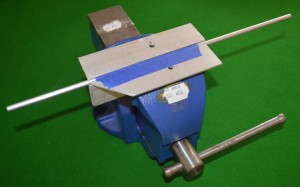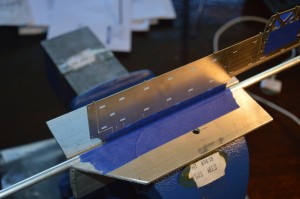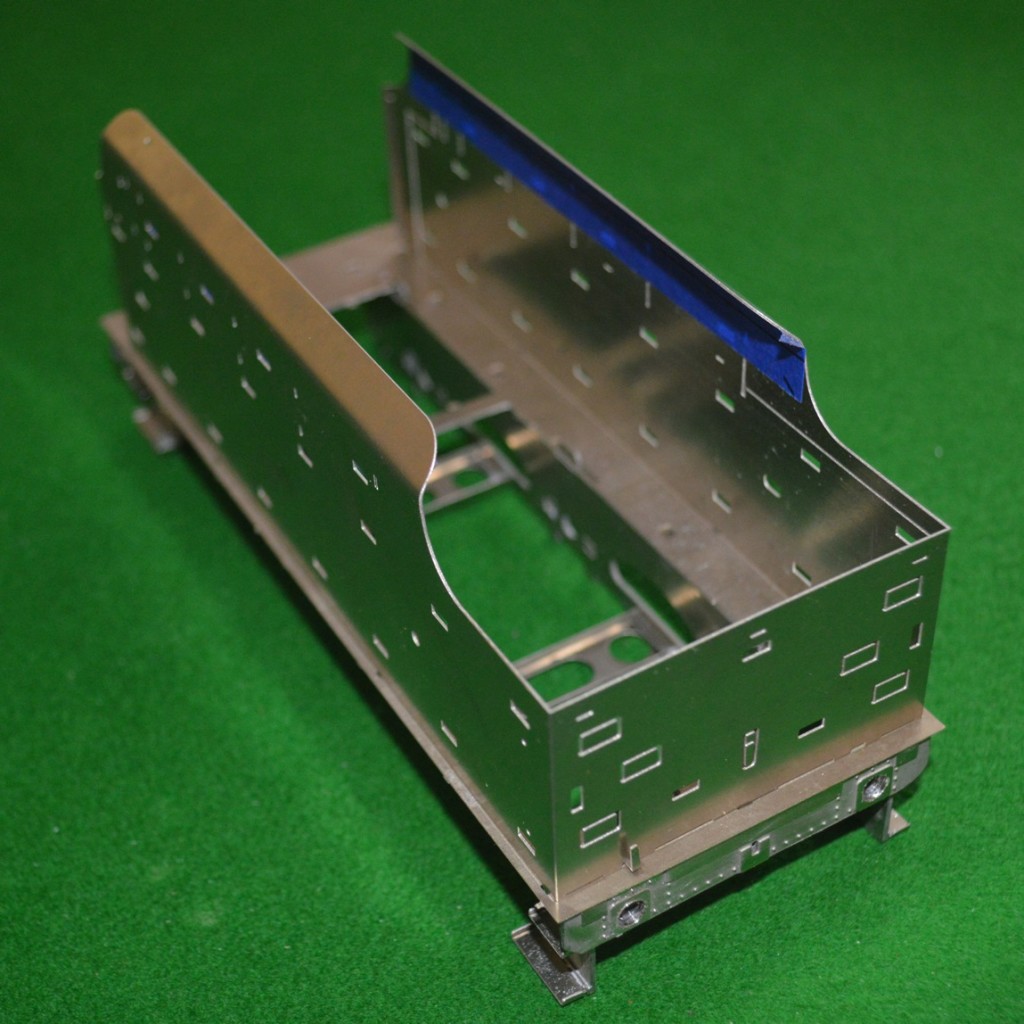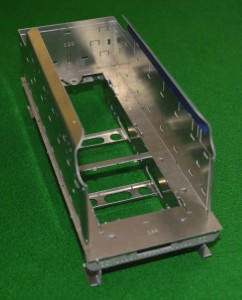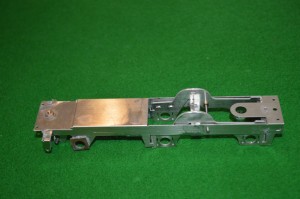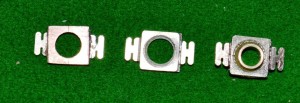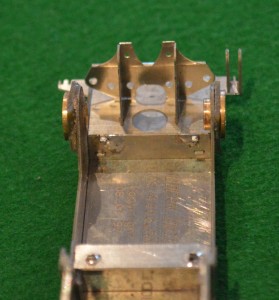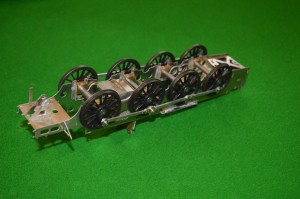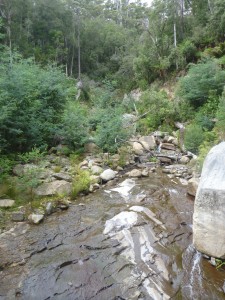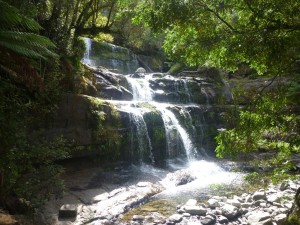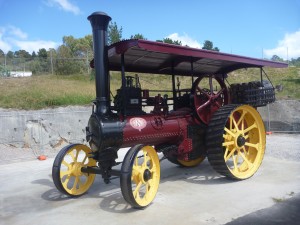It’s beginning to look a bit more like an 8F (admittedly I have placed the pony truck in place and the smokebox door just for this picture, though).
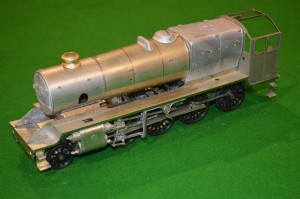 A question however: when I started this project, I saw the picture of a lovely model 8F in brass-and-whitemetal finish. I was looking forward to the day when mine might look similar – but how can that be done if I am also going to have to paint parts of it before I complete construction?
A question however: when I started this project, I saw the picture of a lovely model 8F in brass-and-whitemetal finish. I was looking forward to the day when mine might look similar – but how can that be done if I am also going to have to paint parts of it before I complete construction?
I guess it doesn’t matter really, but if I am to have a realistic painted finish in places like the frames behind the driving wheels, surely this will have to be done by taking the wheels off. Especially if I wish to have a good finish on parts like the springs, which are right behind the wheels, of course. As you’ll observe from the above picture, I haven’t put the braking gear in place yet. Once I have done that the wheels will be very difficult to take off. At present the wheels can be removed easily, because the excellent design of the MOK kit allows the motion bracket, valve gear and wheels to be removed as a unit.
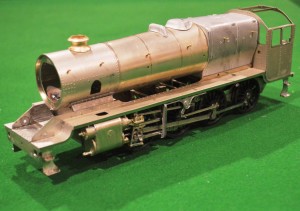 So, how do other modellers manage it?
So, how do other modellers manage it?
How do you make a whole brass-and-whitemetal kit up, and later get a good finish on it, without giving yourself a huge amount of unnecessary work dismantling all the careful modelling done to put it together in the first place?
Answer (I think): you cannot. On the ‘net are articles describing how people have made up a model completely, then have to spend lots of effort systematically pulling them apart so that they can then be painted! When it comes down to doing that, I do not think pictures of the unpainted model are so important, so I will paint the frames behind the wheels at this stage (and probably most of the stuff in-between the frames also).
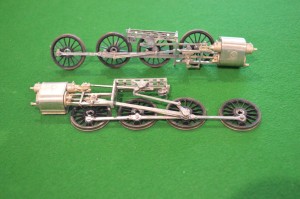 First stage, take the wheels and the motion off the frames. Fortunately this doesn’t prove too difficult.
First stage, take the wheels and the motion off the frames. Fortunately this doesn’t prove too difficult.
This will also give the advantage that I can put the balance weights on the wheels whilst they are flat on the desk, rather than mounted on the frames.
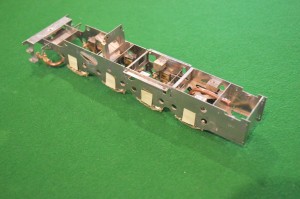 The frames themselves will be easy to paint I hope, although I will have to mask off the sliding hornblocks (bearings) for the driving wheels, and avoid painting the compensation mechanism on the insides of the frames.
The frames themselves will be easy to paint I hope, although I will have to mask off the sliding hornblocks (bearings) for the driving wheels, and avoid painting the compensation mechanism on the insides of the frames.
The balance weights will have to be chosen. I hadn’t realised, but there are many variable configurations of balance weights between difference individual locomotive which are otherwise indistinguishable. So I will need to find a picture of a locomotive in the area where I want to model (not too important) with a rivetted tender (which I think looks nicer), and then try to match the available parts from my kit to make the appropriate balance weights on my locomotive. So, where do I find a side-on view of a Stanier 8F, pulling a tender with lots of rivets on the side, on the Settle-Carlisle Railway (or, at a pinch, anywhere in Lancashire or the North-West?
